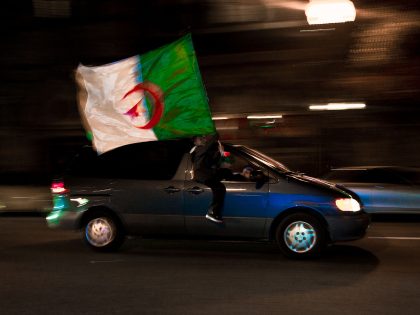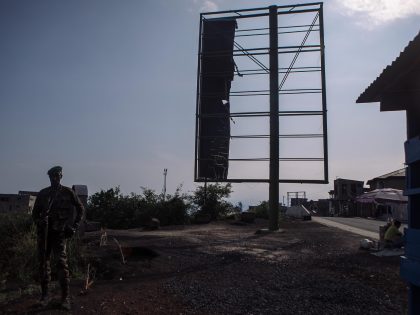The Chronic Sketches “A New Cartography”

The latest issue of the Chronic, a quarterly gazette offshoot of the “project-based mutable object” that is Chimurenga, states its thesis on its cover, which, in the digital version, looks like a network of chalky cartographical scrawls across a dark expanse. The drawings evoke colonial discourse of “blank spaces” and “the dark continent,” reminding readers that such constructions are as arbitrary and temporary as chalk dust, wiped away by whoever takes control of the board next. However, the real value in this issue, titled “A New Cartography,” is how quickly it dispenses with its critique of colonial cartographies and contributes explicitly to a project that has been implicit in much recent African writing: the creation of dynamic, disjunctive spaces that undermine the premise of the map as stable and representative.
The two opening pieces in the issue serve as a statement of purpose and a theoretical grounding that orient readers to its primary agenda: offering graphic, literary, and longform texts that do not so much claim to represent the continent as to explore the possibilities of “Africa” across space and time. First, in an interview with Bregtje van der Haak, Achille Mbembe declares that, “the densification of all kinds of networks, both human and technological, will reshape the entire African spatial map.” Stacy Hardy’s “A Brief History of Mapping” then provides a precis of the major moments in critical cartography, reminding readers of the Berlin Conference, Jorge Luis Borges’ “On Exactitude in Science,” and Nikolaj Cyon’s projection of what the continent would look like had it never been colonized by Europeans.
From there, the contributors tackle everything from Muammar Qaddhafi’s continental political strategizing to African celebrity culture to “Islamish” memory in America, simultaneously mapping overlooked phenomena and unmapping conventional wisdom. Readers looking for a way in to some of the denser pieces might start with Agri Ismail’s “The Power of Green Crayons.” Ismail writes of growing up Kurdish during a period when Kurdistan was erased from official maps. He recalls searching for antique maps to convince himself of his country’s existence, until, observing a young nephew draw the country onto a current map, he realizes, “I needn’t have scoured the earth for ancient maps at all. I could just have drawn them myself.”
Ismail’s young cartographer evokes the protagonist of Nuruddin Farah’s Maps (1986), who draws maps of the Horn of Africa as he tries to make sense of border disputes around the Ogaden region. Maps contains a critique of the nationalism that many early independence-era novels were committed to, effectively attempting to reassert control over the spatial narrative of the continent by working within an externally-imposed framework. More recently, however, novels like Moses Isegawa’s Abyssinian Chronicles (1998), Dinaw Mengestu’s The Beautiful Things That Heaven Bears (2007), and Adaobi Tricia Nwaubani’s I Do Not Come to You by Chance (2010) subvert the cartographical impulse by emphasizing shifting landscapes, mobile subjects, and digital networks.
With this collection of writing and images, the editors of the Chronic have enabled such grassroots, narrative cartography. Throughout, the visual language of the publication is provocatively in tension with the very notion of mapping: the legends are hand-written; the graphite sketches look almost like doodles, divested of institutional authority but made credible by their awareness of their own ephemerality.



















